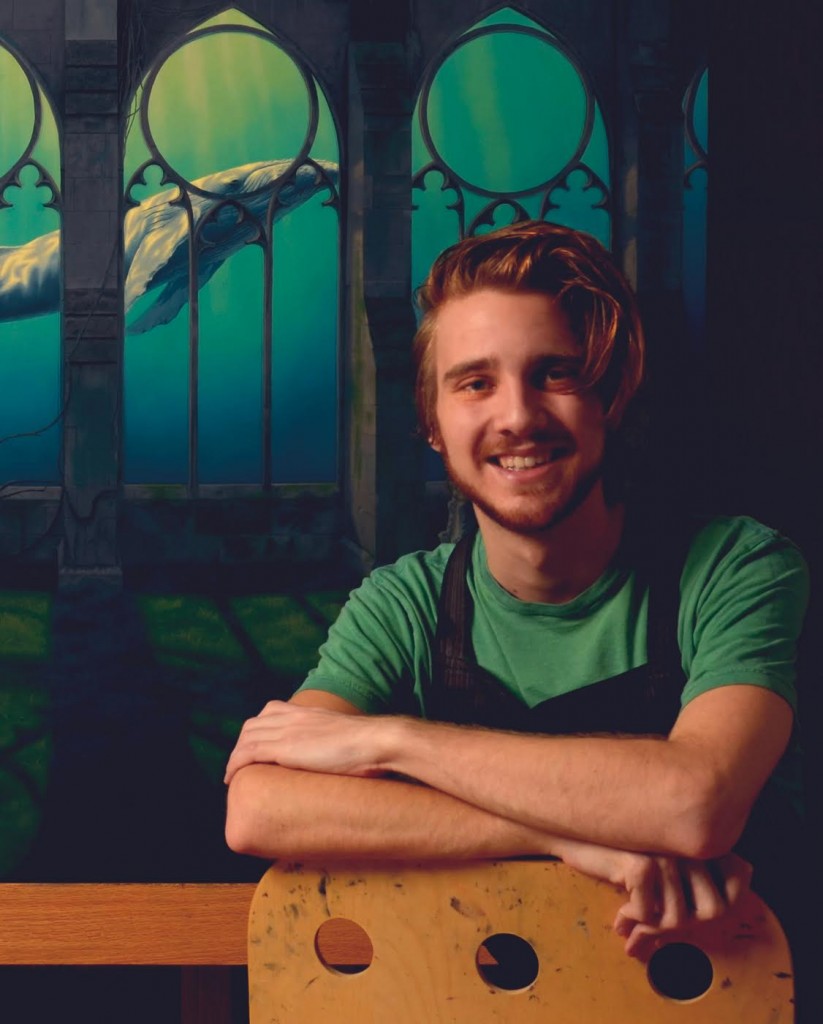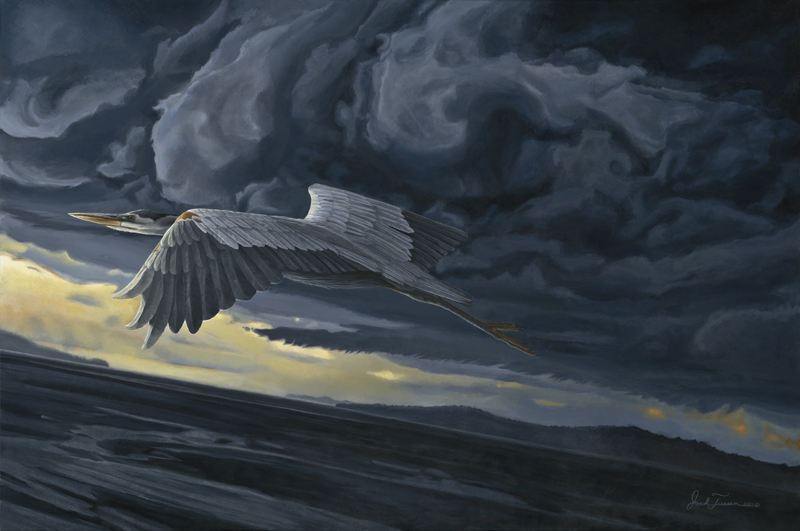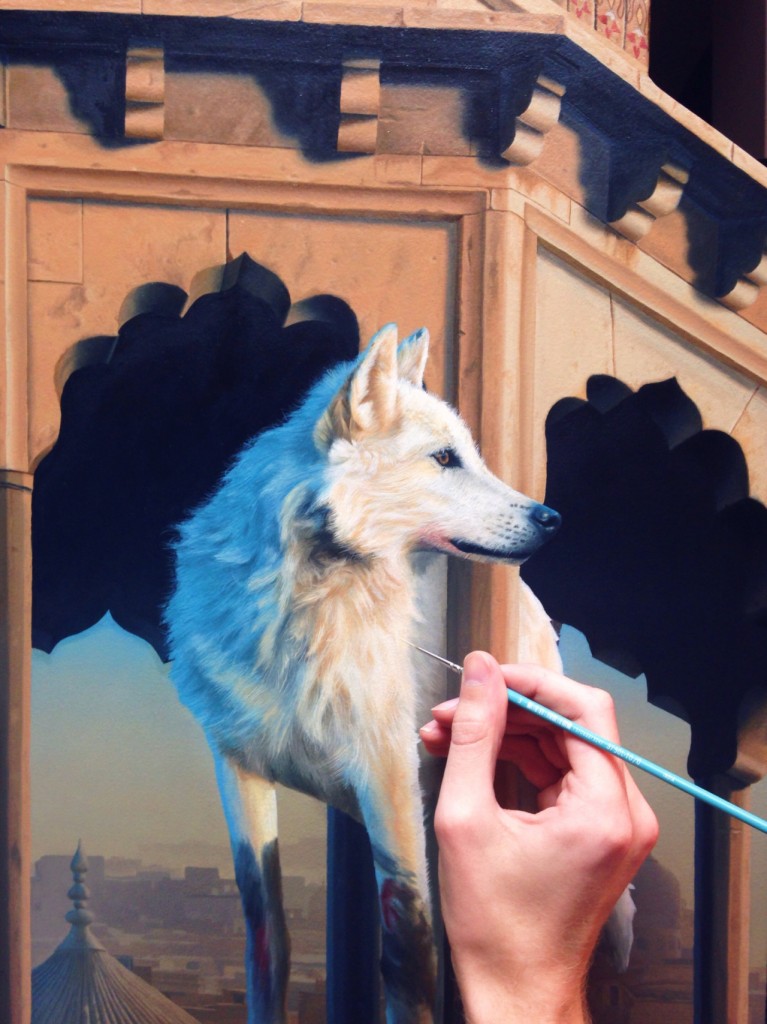Off-Season Artists: Josh Tiessen
Here’s the next instalment in our ongoing series, Off-Season Artists. In these interviews Alex, the guy we send off on a portage through the winding watercourses of the interwebs, spends a little time getting to know our artists.
This time, he’s speaking with Josh Tiessen, an amazing high-realist artist from the Hamilton area…
Enjoy!
You have a very singular background: born in Russia to Canadian missionary parents, living in places all over the world, well traveled at a young age…
I’m curious about what you learned most from those experiences and how they’ve shaped not only your artistic persona but your personality as a whole.
Growing up as a young child in Russia, my parents took me to circuses, ballets and symphonies, which were always done with the utmost of excellence. We also visited world-class art galleries wherever we travelled. I have since returned to my Russian roots, reading Russian novelists such as Tolstoy and Dostoevsky. My childhood was grounded in an appreciation of the arts even though my parents were not artists, but professors and humanitarians. They were also field directors of a large group of 40 expat families who were working in churches, drug and alcohol rehab centres, youth and children’s camps, etc. Beginning my life in a developing nation opened my eyes to the majority of the world, who live in relative poverty. I am glad that I am now in a financial position through my art to be able to give to many charitable causes locally and around the world through my Arts for a Change Foundation.
Studying under Robert Bateman at Hollyhock must have been a fantastic time. He’s got such a prominent place in the pantheon of Canadian artists, and that’s a truly gorgeous part of the world. I’ve done a little hiking in those islands, and it blew me away. So I can only imagine the impact it would have on an artist! What would you say you took away most from your time in that beautiful place, studying under a remarkable artist like Robert?
I happily fell down the rabbit-hole into the art world through the style of naturalistic wildlife. In many ways, this was a gentle landing, as I met many kind and down-to-earth wildlife artists, the most acclaimed of them being Robert Bateman. It was an amazing time being mentored under Bateman, who is old enough to be my grandpa! He told stories from his long and illustrious career and showed his techniques of how he works on a painting from start to finish. My favourite memory was when he critiqued a piece of my art. It was kind of nerve-racking since he decided to do the critiques anonymously, meaning that my painting would be critiqued alongside the work of a select group of professional artists who were double or triple my age. But he gave my “Nesting Trumpeter Swan” a very good critique, and I breathed a big sigh of relief. While on Cortez Island, I was able to take many photo references, as I usually work from up to 20 photos for each piece. My painting of a Great Blue Heron, “Glimmer of Hope,” which exhibited at AAC last year, was inspired by my time on Cortez Island.
I love that painting! It’s so ominous, while the figure of the bird is full of a tangible dignity. But the piece doesn’t lose its naturalistic underpinnings. Speaking of which, the mode you work in, high realism, obviously takes a great degree of technical skill to master. You’ve clearly got that covered. Other than the challenge, what attracts you to that aesthetic?
Yes, I do love the challenge of painting in the style of high realism. When I was younger, I tried cubism and expressionism, but always returned to realism as it better reflected my personality, with my attention to detail and experiences in the natural world, where so much complexity and diversity abound. There is also a great sense of fulfilment when I have worked on a painting for 300-500 hours, and it is something I am really proud of. The misnomer of realism is that it is just the copying of photos, or as Aristotle understood art as being “mimetic” of human life. I think Tolstoy was right when he said that art is the transmission of feelings and thoughts. Art can also be narrative and full of allegory and symbolism, and I feel realism is a well-suited way to express these elements of human experience and history
Lately, we’ve seen your art blend realistic depictions of wildlife and architecture into otherworldly, almost fantasy environments. Where does that impulse come from?
These paintings are part of a new series entitled Streams in the Wasteland, inspired by the Jewish prophetic literature found in the Old Testament of the Bible. I have been interested in the content of the Israelite exile foretold in Isaiah’s prophecies, but specifically struck by his prophecies about wild animals taking up habitation in the destruction of Babylon after its fall to Cyrus of Persia. My particular investigation lies in the significance of these symbolic animals bringing honour to their Creator because of His provision of water in the desert. This became an indictment of the Israelite community as it contrasted their continual unfaithfulness to their God, yet at the same time it was a hopeful foreshadowing of the Living Water that would come. So far I have just begun exploring the modern parallels of exile through my juxtaposed paintings of wild animals in abandoned ancient ruins. Each piece is telling a nuanced aspect within the grand metanarrative. I still have many more paintings planned in this series, and I hope to gather them up from the collectors they have sold to and exhibit them cohesively in a solo exhibition.
You’re in a unique position. Not only have you had a great deal of artistic success while still fairly young, but you’ve also learned to deal with the business-side of artistry. What’s that been like? Do you find that artistic creativity informs your business-sense and vice-versa?
To be honest, business has never come naturally; it has all been learned. A few years ago I was fortunate enough to be accepted into a grant program funded by the Ontario government for young people starting businesses called Summer Company. I also benefitted from free seminars held at the Art Gallery of Burlington. I really had no manual to go by for making a career out of my art, so I have been kind of making it up as I go, with advice from established artists like my mentor Robert Bateman and fellow International Guild of Realism members regarding pricing, promotion, galleries, pitfalls to avoid, etc. My computer skills in graphic design (through college courses) and my creative eye also help me in my business, especially when I am designing exhibition promotions, my website, or planning walls for exhibitions. As a person who is methodical about his artistic process, since all of the money I put into my business is my own, I make sure I’m both methodical and innovative about how to use it best through channels like advertising, social media, the Arts for a Change Foundation, etc.
What’s next for you? Where do you see your career, artistic subjects, and aesthetics as you go forward?
I plan to continue creating non-quadrilateral paintings, developing a unique and recognizable style. In the last few years, I have often painted birds in various environments, but I am now returning to painting mammals like the humpback whale in my recent painting “Whale Hymn,” and the arctic wolf in my current work in progress.
I love taking risks in subject matter, so I may be incorporating figures in my work in the near future, but still within a natural environment
Last of all, what’s something we might not know about you?
When I was younger, I played basketball competitively at a rep-level, and I still enjoy shooting hoops in my backyard. Also, in my free time I enjoy walks at the Eramosa Karst Conservation Area (for which I am on the board), the Bruce Trail, and the Waterfront Trail of Lake Ontario, both of which are just down the street from my studio gallery.
That’s it for our interview with Josh! We’re just as excited to see his new work as he is to create it.
After we give everyone a little breather for the holiday season, we’ll be taking to Lori Dunn about studying wildlife, the strenuous process of scratchboard art, and everything in between!






